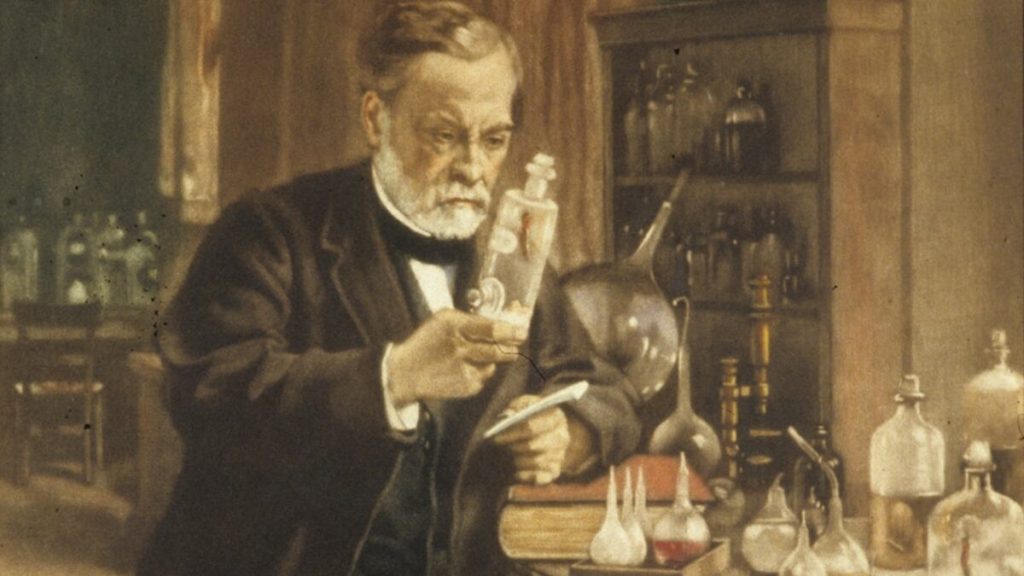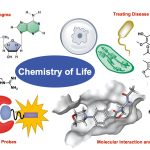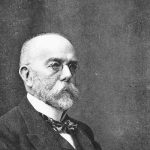Louis Pasteur (1822 – 1895) was a French scientist, whose discoveries provided clear evidence relating germs to diseases, paving the way for a golden era in bacteriology in which the causes of many diseases were identified. He is hence known as one of the fathers of the germ theoryand one of the founders of bacteriology. Pasteur made an important contribution to chemistry laying the foundation of stereochemistry through his identification of isomerism in tartaric acid. He also saved the French silk industry which had been plagued by an unknown disease, and famously created vaccines for anthrax and rabies. However, despite his vast contributions, Pasteur is most known today for inventing the process of pasteurization, which is widely used to treat liquids like milk. Know more about the work of Louis Pasteur by studying his 10 major contributions to science.
#1 HE DISCOVERED THE EXISTENCE OF MOLECULAR ASYMMETRY
The property of tartaric acid to rotate polarized light was first observed by French physicistJean-Baptiste Biot in 1832. There was a mystery surrounding the compound as its solution derived from living things rotated the plane of polarization of light but that derived from chemical synthesis had no such effect even though the compounds displayed identical chemical properties. Louis Pasteur studied tartaric acid and noticed that it consisted of two different types of tiny crystals which were mirror images of each other. When polarized light was passed through each, both solutions rotated it, but in opposite directions. When the two crystals were together in equal quantity in a solution, the effect of rotation was cancelled. Thus Louis Pasteur discovered the existence of molecular asymmetry.

Diagram of Dextro and Levorotary forms of tartrate
#2 LOUIS PASTEUR WAS THE FIRST STEREOCHEMIST
Louis Pasteur’s determination of the problem concerning tartaric acid in 1848 established that just studying the composition of a compound was not enough to understand how a chemical behaves as its structure and shape was also important. This was the first time anyone had demonstrated molecular chirality and also the first explanation of optical isomerism. Louis Pasteur thus laid the foundation of stereochemistry, a sub-discipline of chemistry which involves the study of the spatial arrangement of atoms and molecules. His work in this area, which continued for a further 10 years, is considered by some historians as his “most profound and most original contribution to science”.

2D Fischer Representation of the two enantiomeric isomers of tartaric acid
#3 HE SHOWED THAT FERMENTATION WAS CAUSED DUE TO LIVING ORGANISMS
In the 1850s and 1860s, Louis Pasteur showed that fermentation was a process initiated byliving organisms in a series of investigations. At the time it was thought to be caused by yeast dying and decomposing. In 1858, Pasteur demonstrated that fermentation was a process involving the action of living yeast and that fermentation could also produce lactic acid, which makes wines sour. Through further research, Pasteur showed that the growth of micro-organisms was responsible for spoiling beverages, such as beer, wine and milk.
#4 HE INVENTED THE METHOD OF PASTEURIZATION
After studying the harmful effects of microbes on foodstuffs, Louis Pasteur invented thepasteurization process in 1862. In pasteurization, liquids such as milk are heated to a temperature between 60 and 100 °C to kill microorganisms present within them that cause them to be spoiled. Pasteurization was first used to save the French wine industries from the problem of contamination. Soon the process was also applied to milk and beer. Pasteurization continues to be used widely in the dairy industry and other food processing industries to achieve food preservation and food safety.

Diagram giving an overview of the Pasteurization process
#5 LOUIS PASTEUR DECISIVELY DISPROVED SPONTANEOUS GENERATION
Spontaneous generation was a prevailing notion during Pasteur’s time by which simple life-forms were spontaneously generated from non-living matter. Louis Pasteur conducted an experiment in which he sterilized beef broths by boiling them in swan-neck flasks that contained a filter to prevent all particles from passing through. Nothing grew in the broths unless the flasks were broken open, showing that living organisms came from outside and were not spontaneously generated. Pasteur thus disproved the centuries old doctrine of spontaneous generation and was awarded the Alhumbert Prize in 1862 for his effort.

Diagram of Louis Pasteur’s Experiment with Swan-neck Flasks
#6 PASTEUR REDISCOVERED ANAEROBIOSIS
During the latter part of 17th century, Dutch scientist Antonie van Leeuwenhoek became the first person to observe the existence of anaerobic organisms, or those organisms that can live and grow without the presence of oxygen. In 1857, during his study of butyric acid fermentation, Louis Pasteur discovered that the fermentation process could be arrested by passing air through the fermenting fluid. This led him to conclude the presence of a life form that could exist in the absence of oxygen. Pasteur thus re-discovered anaerobiosis around 200 years after Leeuwenhoek. His rediscovery led to the establishment of the concept of aerobic and anaerobic life. His process to inhibit the fermentation process through oxygen came to be known as Pasteur Effect.

Antonie van Leeuwenhoek – The first person to note the existence of anaerobic organisms
#7 HE HELPED SAVE THE FRENCH SILK INDUSTRY
In the middle of the 19th century, the French silkworm industry was being destroyed by two infectious diseases which were killing a great number of silkworms. In 1865, Louis Pasteur accepted a request to investigate the problem though he knew nothing about silkworms. He identified that parasitic microbes were the cause of the diseases and, after several years of research, was able to save the silkworm industry through a method of prevention of contamination of healthy silkworm eggs. The method was soon employed by silk producers all over the world and is still used in silk producing countries.

String of silkworm cocoons seen from Pasteur’s microscope during his investigation into the diseases of silkworms
#8 LOUIS PASTEUR CREATED VACCINES FOR RABIES AND ANTHRAX
Louis Pasteur’s first important discovery in the study of vaccination came in 1879 and was regarding the disease known as chicken cholera. After accidentally exposing the chickens to an attenuated culture of the disease, he observed that they became resistant to the fully virulent strain. Since then, Pasteur directed all his energy on the problem of immunization and applied this principle to several other diseases. He developed methods of protecting people against two deadly diseases by developing their vaccines, anthrax in 1881 and rabies in 1885.

Louis Pasteur looks on as an early version of the rabies vaccine is administered in 1885
#9 HIS WORK IN PREVENTION OF DISEASES HAS HELPED SAVE COUNTLESS LIVES

Louis Pasteur
Although the method of vaccination had been previously developed by English physician Edward Jenner in 1796, the difference between smallpox vaccination of Jenner and Pasteur’s anthrax or chicken cholera vaccination was that the weakened form of the latter two disease organisms had been generated artificially. Thus, it was not required to find a naturally weak form of the disease organism. It was this discovery that revolutionized work in the prevention of infectious diseases and has helped save countless lives since then.
#10 HE IS CONSIDERED ONE OF THE FATHERS OF GERM THEORY OF DISEASE
Louis Pasteur conducted numerous experiments in his career to demonstrate the relationship between germ and disease. He established without doubt that certain diseases are caused by microorganisms. Hence, though he was not the first to propose it, Pasteur is regarded as one of the fathers of the germ theory of disease. He is also considered one of the three main founders of bacteriology, along with Ferdinand Cohn andRobert Koch. Louis Pasteur was the first to recognize that virulence, or the ability of the microbe to cause damage to its host, was not a constant attribute but a variable property. Variability in virulence still remains relevant in the study of infectious diseases, including SARSand AIDS.


